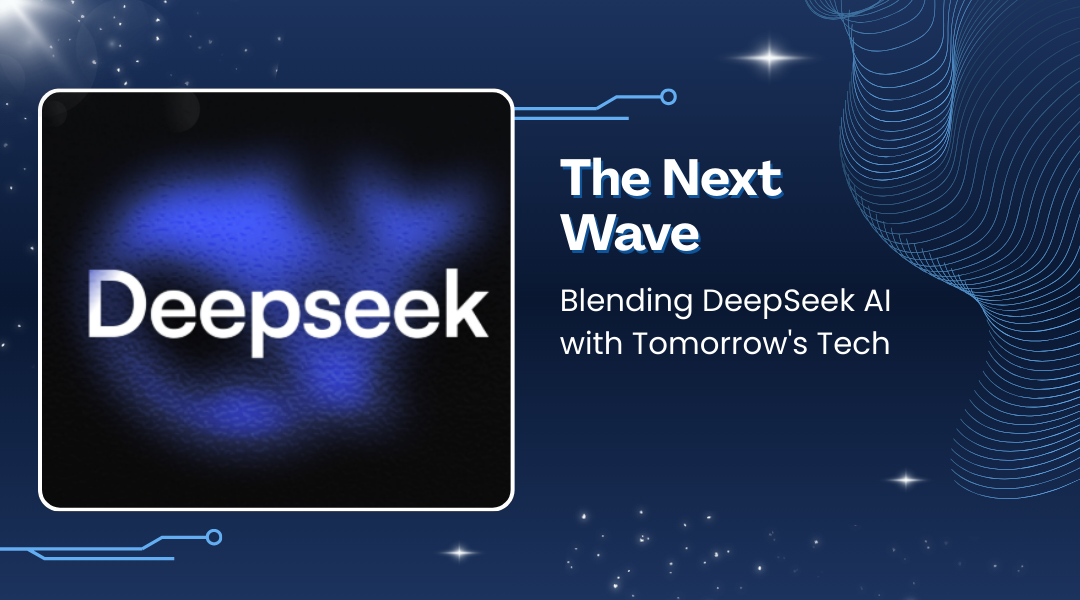The real excitement in AI isn’t just about making existing models bigger—it’s about connecting them to a new generation of technologies that will fundamentally reshape what’s possible. For a system like DeepSeek, the future lies in strategic integration. This means moving beyond the server farm and learning to work with radically different computing paradigms, from the subatomic world of quantum physics to the constrained environment of a smartphone. Here’s a look at how these partnerships could unfold.
Thinking in Parallel: The Quantum Leap
Quantum computing often gets dismissed as a far-off fantasy, but for certain problems, it’s poised to change the game entirely. Unlike classical computers that process bits (0s and 1s), quantum computers use qubits, which can exist in multiple states at once (superposition) and be deeply linked to each other (entanglement).
This isn’t just a minor speed boost. It’s a fundamentally different way of processing information.
- The Practical Partnership: The most immediate application for DeepSeek wouldn’t be replacing classical computers, but augmenting them. Imagine using a quantum processor as a specialized co-processor for specific, intractable tasks.
- A Concrete Example: Molecular Simulation. A pharmaceutical researcher using DeepSeek could ask, “What’s the most stable 3D shape for this new protein drug candidate?” Simulating this at an atomic level is brutally complex for classical computers. A quantum-integrated DeepSeek could offload this specific calculation to a quantum processor, get a near-instant answer, and then use its classical reasoning to interpret the result and suggest the next experiment. The quantum computer handles the physics; DeepSeek handles the biology and the reasoning.
Intelligence on the Front Lines: The Edge AI Revolution
The current cloud-based AI model—where data is sent to a massive data center for processing—has limits. It creates latency, privacy concerns, and a dependency on connectivity. Edge AI flips this model by putting the intelligence directly on the device where the data is generated.
- Beyond the Cloud: The goal is to create a lightweight, but still powerful, version of DeepSeek that can run on a smartphone, a drone, or a factory sensor.
- A Concrete Example: Real-Time Translation. Imagine a journalist wearing AR glasses at a press conference in a foreign country. A compact DeepSeek model running locally on the glasses could transcribe the speech, translate it in real-time, and display the subtitles in the journalist’s field of view—all without a single byte of data ever leaving the device. This isn’t just faster; it’s more private and reliable.
Mapping Connections: The Power of Graph Neural Networks
The world isn’t made of spreadsheets; it’s made of networks. Everything from social media and financial transactions to molecular biology and supply chains is a complex web of relationships. Traditional AI struggles with this. Graph Neural Networks (GNNs) are built for it.
- Understanding Relationships, Not Just Things: GNNs don’t just analyze individual data points; they analyze the connections between them.
- A Concrete Example: Financial Fraud Detection. A classic AI might flag a transaction as fraudulent based on its amount and location. A DeepSeek integrated with GNNs would see much more. It would map the entire network: “This transaction originates from an account that was recently created, which is connected to five other accounts that were involved in a known fraud ring six months ago, and the recipient account has a pattern of quickly moving funds to an offshore bank.” It detects fraud not from a single event, but from the pattern of relationships.
Building Trust Through Explainability
As AI systems become more complex through these integrations, a critical challenge emerges: How do we trust them? This is where Explainable AI (XAI) becomes non-negotiable.
- More Than a Answer: It’s not enough for a quantum-augmented DeepSeek to design a new material. It must be able to show its work: “I suggest this alloy because the quantum simulation showed a 40% stronger molecular bond under stress, and my knowledge database indicates the raw materials are readily available.”
- Visualizing Reasoning: For a GNN-powered fraud detection, the explanation wouldn’t be a confidence score. It would be an interactive visual map of the transaction network, highlighting the suspicious connections in red so a human investigator can immediately understand the reasoning.
Navigating the Challenges
These integrations are not simple plug-and-play. They come with significant hurdles:
- The Hybrid Hurdle: Quantum-classical hybrid algorithms are incredibly difficult to design. You can’t just run a standard neural network on a quantum computer. It requires inventing entirely new ways to structure problems.
- The Shrinking Problem: Compressing a massive model like DeepSeek to run on a tiny edge device without losing its capabilities is a major feat of engineering, often requiring new, more efficient AI architectures.
- The Interoperability Puzzle: Getting a GNN, a classical neural network, and a quantum computing framework to talk to each other seamlessly is a massive software challenge.
Conclusion: The Strategic Integration Mindset
The future of a system like DeepSeek isn’t just about internal improvement. It’s about becoming a connective tissue—a sophisticated reasoning engine that can leverage whatever processing power is best for the task at hand, whether it’s a quantum processor for a specific calculation, an edge device for real-time response, or a GNN for untangling complex networks.
The organizations that will lead won’t be those with the biggest AI models, but those that can most effectively orchestrate these technologies into a coherent, trustworthy, and powerful whole. This journey is about building a new kind of intelligence: one that is as comfortable in the cloud as it is on your phone, and one that can explain its fascinating, complex reasoning in a way we can all understand.
